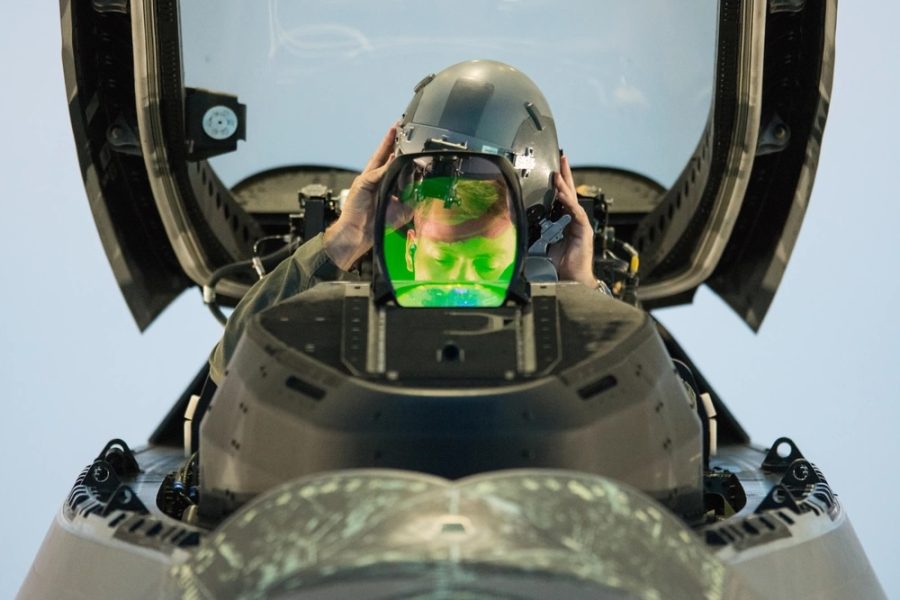Stress can get to anybody, even Air Force fighter pilots. One F-35 instructor pilot, Hasard Lee, sees it happen to even the best students. Returning from a training flight one day, Lee and his student had to change radio frequencies, a simple task if the pilot taps the right buttons on the F-35’s touch screen display. But on that day, the student tapped the wrong button.
“After several moments of silence, the student realized that something was wrong and began troubleshooting the problem, thinking that his radio had failed,” Lee wrote in his recent book, “The Art of Clear Thinking: A Stealth Fighter Pilot’s Timeless Rules for Making Tough Decisions.”
“As I flew formation off him, I noticed his altitude start to drift by several hundred feet, a tell-tale sign that he was beginning to become overwhelmed as he struggled to manage his cross-check,” Lee went on.
The student eventually switched to the right frequency, but “for the remainder of the flight, it was like I was flying with a completely different student,” Lee wrote. “The collected, above-average student was now flying erratically.”
The student missed radio calls, failed to descend at the proper times, and even tried to cut off another formation of fighters. Once they landed at Luke Air Force Base, Ariz., and debriefed, the student said he was angry with himself for the radio frequency mistake, and that anger, combined with the fear of failing the flight, “pushed him into a fight-or-flight response, which began to shut down his prefrontal cortex, and therefore his ability to make logical decisions.”
It may seem like a severe reaction, but Lee has seen many students mentally unravel after a simple mistake. The pilots are often young, working under intense pressure to succeed, and in a dangerous environment. As far back as World War II, the then-U.S. Army Air Forces found that skilled pilots in peacetime often crashed in combat due to simple mental mistakes. Studies showed that stress severely reduced performance in tasks requiring complex or flexible thinking.
“We have a saying in the fighter pilot community that you lose 20 IQ points as soon as you put on your helmet,” Lee wrote. “What looks easy in the classroom is much more difficult when you’re sweating in the hot cockpit with dozens of people talking simultaneously through the radios and lives at stake.”
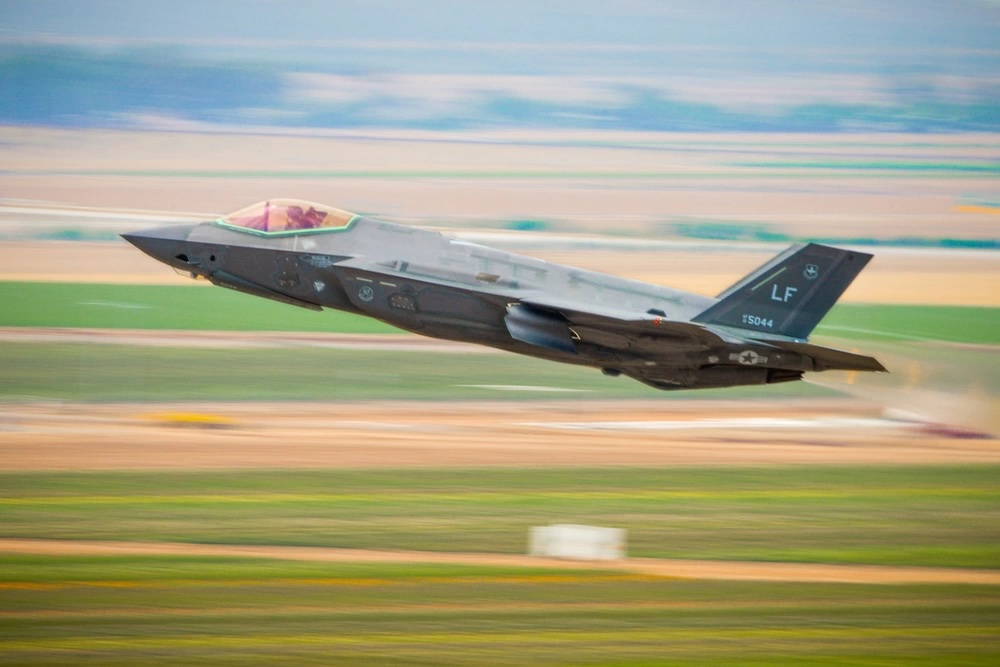
In previous generations of Air Force pilot training, there was no formal education on how to manage stress and emotions. But a new program, Comprehensive Readiness for Aircrew Flying Training (CRAFT) is helping students fly better, score higher grades, and stay in the training pipeline, an important outcome at a time when the service is struggling to retain pilots.
“You’re going to screw something up, that’s just going to happen, so how do you recover?” Lt. Col. Carolyn Price Moore, CRAFT program director for 19th Air Force, told Air & Space Forces Magazine. “Do you dwell on the mistake, or do you use your mindfulness, your [emotional] intensity regulation, and your diaphragmatic breathing to refocus on the present, to move forward so that you don’t get into a nervous spiral.”
Punching Above Weight
It all started in the boxing ring. As a member of the U.S. Air Force Academy boxing team, Lee found the stress before a fight often made it difficult for him to focus during the fight itself. But a chance encounter with a sports psychologist from the nearby U.S. Olympic Training Center opened the door to mental workouts that many athletes perform alongside their physical ones.
“As I learned more about the field, I began to understand that what I was experiencing during the fights was my body’s natural response to stress and pressure,” Lee wrote. “More importantly, there were best practices that I could apply to overcome them, such as visualization, self-talk, and specialized breathing techniques.”
The mental training was not a substitute for hard work and preparation, but it helped him perform to the level of his preparation. His boxing improved, and he applied the same techniques to speaking in front of large groups, skydiving, and pilot training. Lee found the Air Force flight instruction exemplary, but there was not much guidance on how to handle emotions, a common issue among training institutions.
“It’s kind of a default that you either sink or swim, and it was certainly when I went to pilot training in 2010,” Lee, a reservist, told Air & Space Forces Magazine in his civilian capacity. “That’s an effective technique, you know the people who come out the other side are going to be solid. But the problem is the training is very expensive … so if people get halfway through that training and wash out because they have some issues with being resilient, that could waste a lot of taxpayer money.”
Lee used himself as an example. Though not the most talented pilot, he used resilience techniques to perform consistently well in training and maintain confidence after mistakes, an area where even students with significant civilian flight time faltered.
“Without the confidence to make sound decisions, you’re putting yourself and others at risk,” he wrote. “In the past, it was thought that you either had confidence or you didn’t, and those who didn’t were quickly weeded out. However, confidence is a skill that can be improved, primarily through our internal dialogue.”
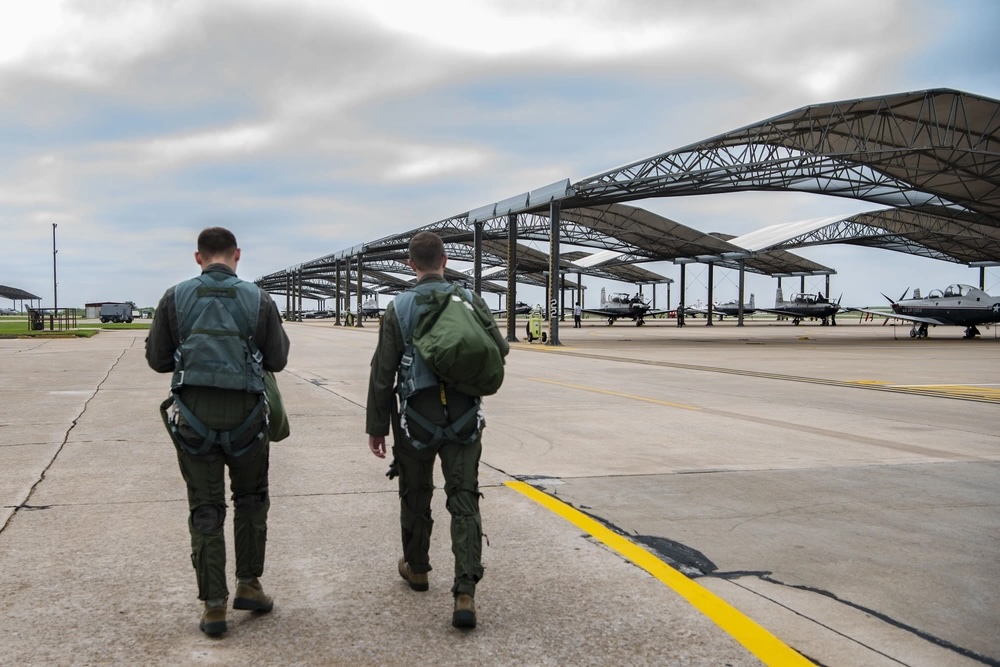
Old Meets New
Lee is not the only one thinking about mental performance. By 2011, U.S. Special Operations Command was feeling the strain of the Global War on Terror, prompting then-SOCOM boss Adm. William McRaven to stand up The Preservation of Force and Families Task Force, a program that went after injury prevention, psychological care, and work tempo. Price Moore worked for Air Force Special Operations Command and helped expand the program for special operations aircrew.
AFSOC became a role model for the rest of the service. Around 2017, Lee met with a three-star general who wanted to revamp pilot training. Lee shared his experiences with mental performance training, and he eventually linked up with a flight doctor who received a grant to launch a test program for F-35 student pilots at Luke.
The Luke program was holistic, with dietitians to encourage healthy eating habits, and strength coaches and massage therapists to address neck and back pain, a frequent problem among fighter pilots who have to keep their heads on a swivel at high G-forces. On the cognitive side, students learned breathing techniques to calm the body and mind, to develop confidence through positive mental self-talk, and to save the close analysis of mistakes for the debrief afterwards.
“You know there is a dedicated time after the flight that you can pull everything apart,” Lee said. “You can chuck any mistakes into that and just focus on the flight at hand.”
Not all of the program was brand-new. One key activity was chair flying, where pilots sit in a chair, imagine it’s an ejection seat, and rehearse the steps of a real-world sortie. The technique goes back to at least World War II, but the Luke program brought a slight twist by introducing steps for handling self-doubt.
“If doubt crept in, or they felt they had made a mistake, they would simply repeat the maneuver or procedure until they had successfully completed it in their minds,” Lee wrote.
Lee said the training decreased the wash-out rate and improved the performance of average and below-average students. There was also less of a snowball effect when students made mistakes. The program was successful enough that it spread to the rest of Air Education and Training Command (AETC) in the form of CRAFT.
“On the AETC side, Luke was where it all started,” Price Moore said. “That program was pivotal in how it expanded across the rest of the 19th Air Force.”
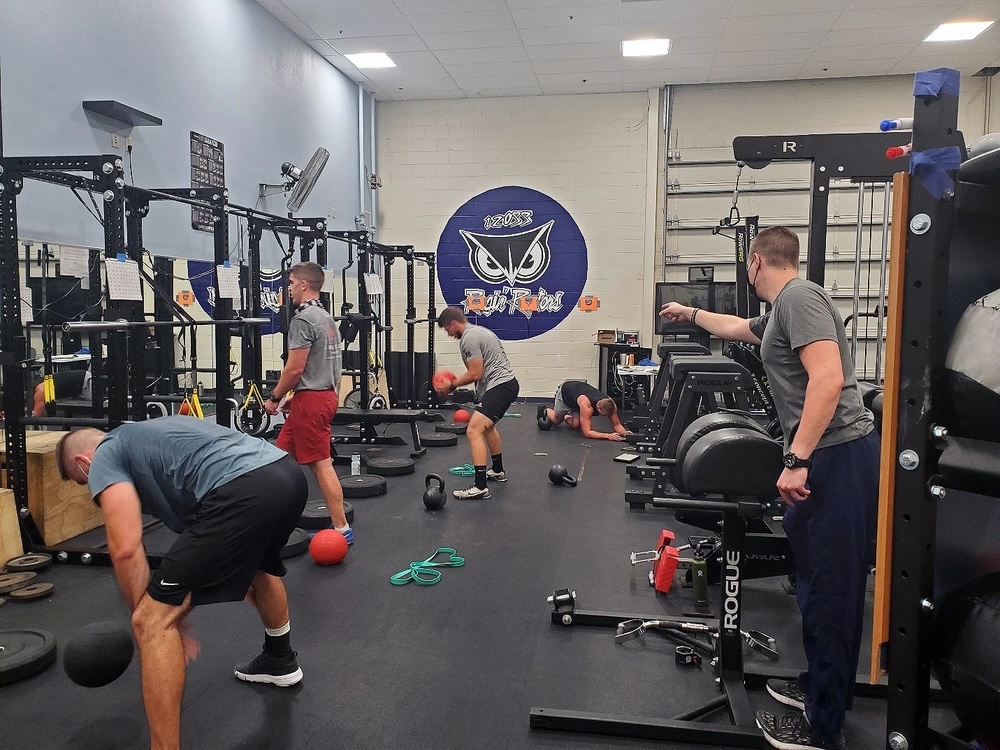
Power to the Pipeline
The first CRAFT programs for undergraduate pilot training stood up in 2020 at Joint Base San Antonio-Randolph, Texas; and Vance Air Force Base, Okla.; where students fly their first aircraft, the T-6 Texan II. Specialist contractors teach classes in nutrition, cognitive performance, and strength and conditioning. After the initial classes, students have to attend a minimum of two CRAFT events a week, and they can also schedule follow-up sessions. Many do—Price Moore said students contact specialists 2,000 more times annually than the baseline required visits, with cognitive specialists in highest demand.
The cognitive performance training is rooted in the University of Pennsylvania’s positive psychology program, where failure is seen as a chance to learn. The students learn to change their mindset on failure and to moderate their physical response to it. The techniques include diaphragmatic breathing—breathing from the abdomen which can slow heart rate—visualization, progressive muscle relaxation, and controlling strong emotions such as anxiety. Students in CRAFT practice cognitive techniques in between physical workout sets in an effort to simulate the hot, sweaty, fatigued conditions of an actual cockpit.
“It’s really easy to sit here and practice mindfulness at one G, but we want them to utilize it in a more stressful situation,” Price Moore said. “You come to Randolph in the summer, it’s 100 degrees outside and you’ve got your survival vest and your G suit on, so you’re hot and sweaty and your heartbeat is higher just walking to the jet.”
CRAFT has already changed the lives of many student pilots. About a quarter of the students across four T-6 classes this year said in feedback forms that CRAFT saved them from washing out. Students in T-6 and T-1 Jayhawk classes who completed three or more CRAFT sessions saw a 16-to-63 percent improvement in aircraft-related cognitive performance over students with fewer than three sessions, and an 8-to-33 percent improvement in aircraft performance-related physical fitness scores.
A vast majority of students reported on feedback forms that CRAFT helped them become better students and pilots, and it helped many get selected for the airframe of their choice. Price Moore noted that students who interact with CRAFT more frequently tend to finish at the top of their T-6 class and are able to track into the T-38 fighter/bomber pathway.
“The Cognitive Specialist’s cognitive consults were the biggest attributing factor in my success at [Introduction to Fighter Fundamentals],” wrote one student in a feedback form.
Another student reported that a CRAFT dietician helped him get under the ejection seat weight limit, while others said the strength and conditioning coaches helped them pass the centrifuge test, feel stronger in the cockpit, and suffer “significantly less” neck and back pain. Even better, CRAFT has reduced the number of hours students need to master pilot skills, so planners do not need to sacrifice pilot training time for CRAFT.
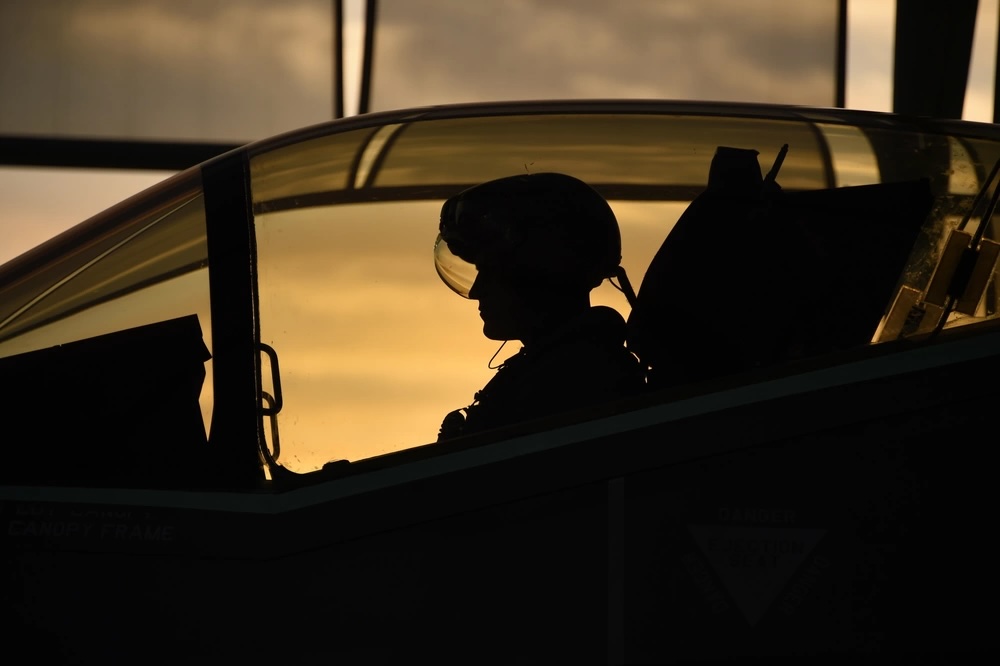
Bigger and Better
CRAFT has mushroomed since 2020, with about 100 contractors working in 13 locations across the 19th Air Force, including most undergraduate pilot training locations and several formal training units for specific aircraft. The program will likely change as more data informs new techniques, but the Air Force is already looking to stand up a similar program for aircrews across the service.
Learning to think more flexibly could also help ground-based Airmen, especially as the Air Force pushes troops to pick up more skills in order to operate from smaller airfields in a future conflict.
“You can’t ask somebody to be multi-capable or prepared for agile combat employment if they are not mentally agile, if they are not good at rapid decision-making under stressful conditions,” Price Moore said.
